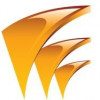Filter interviews by
DGS Technical Services Engineer Trainee Interview Questions and Answers
10 Interview questions
As an Engineer Trainee, I may be required to take various tool tests to assess my technical skills and problem-solving abilities.
Technical proficiency test: Assessing knowledge of engineering software like AutoCAD or MATLAB.
Hands-on tool test: Using tools like oscilloscopes or multimeters to troubleshoot circuits.
Problem-solving scenarios: Solving engineering problems or case studies relevant to the role.
Team coll...
Effective draft reading involves active engagement, critical analysis, and structured feedback for clarity and improvement.
Skim the draft first to get an overview of the content and structure.
Read actively by highlighting key points and making notes in the margins.
Identify the main arguments and assess their clarity and logic.
Check for coherence and flow between sections; ensure transitions are smooth.
Provide cons...
The title block contains essential information about a technical drawing, ensuring clarity and proper documentation.
Contains the drawing title, indicating the subject of the drawing.
Includes the name of the designer and checker, ensuring accountability.
Lists the scale of the drawing, which is crucial for accurate measurements.
Provides the date of creation, helping track revisions and updates.
May include the drawin...
Basic design formulas include principles of geometry, material strength, and fluid dynamics essential for engineering applications.
1. Area = Length × Width (e.g., calculating the area of a rectangle)
2. Volume = Length × Width × Height (e.g., determining the volume of a cube)
3. Stress = Force / Area (e.g., analyzing material strength under load)
4. Strain = Change in Length / Original Length (e.g., measuring deforma...
Basic geometry involves the study of shapes, sizes, and properties of space, including points, lines, angles, and figures.
Geometry is divided into two main branches: Euclidean and Non-Euclidean geometry.
Key concepts include points (no size), lines (infinite length), and planes (flat surfaces).
Common shapes studied are triangles, circles, squares, and polygons.
The Pythagorean theorem relates the sides of a right tr...
Dimension conversions involve changing units of measurement, essential in engineering for accuracy and standardization.
Length: 1 inch = 2.54 cm, 1 meter = 39.37 inches.
Area: 1 square meter = 10.764 square feet.
Volume: 1 liter = 1.057 quarts.
Mass: 1 kilogram = 2.20462 pounds.
Temperature: Celsius to Fahrenheit: (°C × 9/5) + 32.
Fits in engineering define the tolerance and clearance between mating parts, ensuring proper assembly and function.
1. Clearance Fit: Allows space between parts, e.g., a shaft in a hole.
2. Interference Fit: Parts are tightly fitted, e.g., a press-fit bearing.
3. Transition Fit: Combination of clearance and interference, e.g., a bolt in a hole.
4. Loose Fit: Provides significant clearance, e.g., a wheel on an axle.
5. ...
Detailing involves creating precise and comprehensive designs or specifications for engineering projects.
Involves creating detailed drawings and specifications for components.
Ensures accuracy in dimensions, materials, and tolerances.
Includes annotations and notes for clarity, such as assembly instructions.
Utilizes software tools like CAD for precision and efficiency.
Example: Detailing a mechanical part for manufac...
Metals in manufacturing include ferrous and non-ferrous types, each with unique properties and applications.
Ferrous metals: Contain iron, e.g., steel and cast iron, known for strength and durability.
Non-ferrous metals: Do not contain iron, e.g., aluminum (lightweight, corrosion-resistant) and copper (excellent conductivity).
Alloys: Combination of metals, e.g., brass (copper and zinc) used in plumbing and electrica...
Metals are categorized into ferrous, non-ferrous, and noble metals, each with distinct properties and applications.
Ferrous Metals: Contain iron; examples include steel and cast iron.
Non-Ferrous Metals: Do not contain iron; examples include aluminum, copper, and zinc.
Noble Metals: Resistant to corrosion and oxidation; examples include gold, silver, and platinum.
Alloys: Mixtures of metals; examples include bronze (c...
DGS Technical Services Engineer Trainee Interview Experiences
1 interview found
I appeared for an interview before Mar 2024, where I was asked the following questions.
- Q1. What are the basic formulas used in design?
- Ans.
Basic design formulas include principles of geometry, material strength, and fluid dynamics essential for engineering applications.
1. Area = Length × Width (e.g., calculating the area of a rectangle)
2. Volume = Length × Width × Height (e.g., determining the volume of a cube)
3. Stress = Force / Area (e.g., analyzing material strength under load)
4. Strain = Change in Length / Original Length (e.g., measuring deformation ...
- Q2. What does the title block contain, and how is it important in technical drawings?
- Ans.
The title block contains essential information about a technical drawing, ensuring clarity and proper documentation.
Contains the drawing title, indicating the subject of the drawing.
Includes the name of the designer and checker, ensuring accountability.
Lists the scale of the drawing, which is crucial for accurate measurements.
Provides the date of creation, helping track revisions and updates.
May include the drawing num...
- Q3. What is your experience with your previous company?
- Ans.
I gained hands-on experience in engineering projects, collaborating with teams to enhance product design and efficiency.
Worked on a team project to redesign a component, resulting in a 15% increase in efficiency.
Participated in weekly meetings to discuss project progress and address challenges.
Conducted testing and analysis on prototypes, ensuring they met quality standards.
Collaborated with cross-functional teams, inc...
- Q4. What is the best approach to reading a draft effectively?
- Ans.
Effective draft reading involves active engagement, critical analysis, and structured feedback for clarity and improvement.
Skim the draft first to get an overview of the content and structure.
Read actively by highlighting key points and making notes in the margins.
Identify the main arguments and assess their clarity and logic.
Check for coherence and flow between sections; ensure transitions are smooth.
Provide construct...
- Q5. What does detailing involve?
- Ans.
Detailing involves creating precise and comprehensive designs or specifications for engineering projects.
Involves creating detailed drawings and specifications for components.
Ensures accuracy in dimensions, materials, and tolerances.
Includes annotations and notes for clarity, such as assembly instructions.
Utilizes software tools like CAD for precision and efficiency.
Example: Detailing a mechanical part for manufacturin...
- Q6. What are the different types of metals?
- Ans.
Metals are categorized into ferrous, non-ferrous, and noble metals, each with distinct properties and applications.
Ferrous Metals: Contain iron; examples include steel and cast iron.
Non-Ferrous Metals: Do not contain iron; examples include aluminum, copper, and zinc.
Noble Metals: Resistant to corrosion and oxidation; examples include gold, silver, and platinum.
Alloys: Mixtures of metals; examples include bronze (copper...
- Q7. What types of metals are typically used in the manufacturing industry?
- Ans.
Metals in manufacturing include ferrous and non-ferrous types, each with unique properties and applications.
Ferrous metals: Contain iron, e.g., steel and cast iron, known for strength and durability.
Non-ferrous metals: Do not contain iron, e.g., aluminum (lightweight, corrosion-resistant) and copper (excellent conductivity).
Alloys: Combination of metals, e.g., brass (copper and zinc) used in plumbing and electrical app...
- Q8. What is your knowledge regarding dimension conversions?
- Ans.
Dimension conversions involve changing units of measurement, essential in engineering for accuracy and standardization.
Length: 1 inch = 2.54 cm, 1 meter = 39.37 inches.
Area: 1 square meter = 10.764 square feet.
Volume: 1 liter = 1.057 quarts.
Mass: 1 kilogram = 2.20462 pounds.
Temperature: Celsius to Fahrenheit: (°C × 9/5) + 32.
- Q9. What are the different types of fits in engineering?
- Ans.
Fits in engineering define the tolerance and clearance between mating parts, ensuring proper assembly and function.
1. Clearance Fit: Allows space between parts, e.g., a shaft in a hole.
2. Interference Fit: Parts are tightly fitted, e.g., a press-fit bearing.
3. Transition Fit: Combination of clearance and interference, e.g., a bolt in a hole.
4. Loose Fit: Provides significant clearance, e.g., a wheel on an axle.
5. Tight...
- Q10. What is your knowledge of basic geometry?
- Ans.
Basic geometry involves the study of shapes, sizes, and properties of space, including points, lines, angles, and figures.
Geometry is divided into two main branches: Euclidean and Non-Euclidean geometry.
Key concepts include points (no size), lines (infinite length), and planes (flat surfaces).
Common shapes studied are triangles, circles, squares, and polygons.
The Pythagorean theorem relates the sides of a right triangl...
- Q11. If you are deemed suitable for the position, what kind of tool test will you be required to take?
- Ans.
As an Engineer Trainee, I may be required to take various tool tests to assess my technical skills and problem-solving abilities.
Technical proficiency test: Assessing knowledge of engineering software like AutoCAD or MATLAB.
Hands-on tool test: Using tools like oscilloscopes or multimeters to troubleshoot circuits.
Problem-solving scenarios: Solving engineering problems or case studies relevant to the role.
Team collabora...
Top trending discussions






Interview questions from similar companies
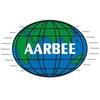
I applied via Campus Placement and was interviewed in May 2024. There were 2 interview rounds.
(2 Questions)
- Q1. Tell me about your self
- Q2. Tell about your internship
(2 Questions)
- Q1. Are you ok work with us
- Q2. Are you adopt any situation
Interview Preparation Tips

Senior Engineer Interview Questions & Answers
Pan Gulf Technologiesposted on 10 Oct 2023
I applied via Job Portal

(1 Question)
- Q1. ASME codes & standard
(1 Question)
- Q1. Design software about Pv elite
- Ans.
Pv elite is a software used for designing pressure vessels and heat exchangers.
Pv elite is commonly used in the oil and gas industry for designing pressure vessels.
The software allows engineers to analyze and design pressure vessels according to various international codes and standards.
Pv elite includes features for designing heat exchangers, towers, and horizontal vessels as well.
Engineers can input design parameters...
Skills evaluated in this interview

I applied via Referral and was interviewed in Dec 2020. There were 3 interview rounds.
Interview Questionnaire
1 Question
- Q1. Everything was related telecom.
Interview Preparation Tips

I applied via Job Fair and was interviewed before Aug 2022. There were 4 interview rounds.

(4 Questions)
- Q1. How to find the Reactions
- Ans.
Reactions can be found by analyzing the external forces and moments acting on a structure.
Calculate the sum of forces in the x, y, and z directions to find the reaction forces at supports
Analyze the moments around different points to determine the reaction moments
Consider the equilibrium of the structure to ensure all forces and moments are balanced
- Q2. What is Steel Structures
- Ans.
Steel structures are structures made primarily of steel components, known for their strength, durability, and versatility.
Steel structures are commonly used in construction for buildings, bridges, and other infrastructure.
They are known for their high strength-to-weight ratio, allowing for lighter and more efficient designs.
Steel structures can be prefabricated off-site and assembled on-site, speeding up construction t...
- Q3. How to define the moment and shear connection s
- Ans.
Moment and shear connections are used in structural engineering to transfer forces between members.
Moment connections transfer bending forces between beams and columns
Shear connections transfer shear forces between beams and columns
Moment connections can be achieved through welding, bolting, or a combination of both
Shear connections typically involve bolts or welds to transfer the shear forces
- Q4. How to solve the Point load, UDL, UVL load problems
- Ans.
To solve Point load, UDL, UVL load problems, calculate reactions, draw shear force and bending moment diagrams, and apply equilibrium equations.
Calculate reactions at supports using equilibrium equations
Draw shear force diagram by summing vertical forces at each section
Draw bending moment diagram by summing moments at each section
Apply equations of equilibrium to find internal forces and stresses
Consider the type of lo...
(2 Questions)
- Q1. Logical Thinking questions
- Q2. How to define the problematic paper's
- Ans.
Problematic papers are defined by their unclear objectives, lack of methodology, inconsistent results, and poor organization.
Unclear objectives: The paper does not clearly state its research goals or objectives.
Lack of methodology: The paper fails to explain how the research was conducted or the methods used.
Inconsistent results: The findings presented in the paper do not align with the research question or hypothesis.
...
(1 Question)
- Q1. What is Retaining wall
- Ans.
A retaining wall is a structure designed to hold back soil or other materials to prevent erosion or collapse.
Retaining walls are commonly used in landscaping to create terraces or level areas on sloped land.
They can be made of various materials such as concrete, stone, brick, or wood.
Retaining walls can be either gravity walls, cantilever walls, sheet pile walls, or anchored walls.
Proper drainage behind the retaining w...
Interview Preparation Tips
- Steel Structures
- DRC
- Design of reinforcement

I applied via Walk-in and was interviewed in Sep 2023. There were 3 interview rounds.

Basic civil engineering aptitude
(3 Questions)
- Q1. Construction design, steel connections, basic civil, Graphics
- Q2. Shear force and bending moment diagram
- Ans.
Shear force and bending moment diagrams are graphical representations of internal forces in a structural element.
Shear force diagram shows the variation of shear force along the length of the beam.
Bending moment diagram shows the variation of bending moment along the length of the beam.
Shear force is the sum of all vertical forces acting on one side of a cut section of the beam.
Bending moment is the sum of all moments ...
- Q3. Load calculation in a framed structure
- Ans.
Load calculation in a framed structure involves determining the forces acting on the structure to ensure it can safely support the intended loads.
Identify all the loads acting on the structure, including dead loads (permanent), live loads (temporary), and environmental loads (wind, snow, etc.)
Calculate the total load on each structural element by summing up all the individual loads it must support
Consider factors such ...
Interview Preparation Tips

I applied via Campus Placement and was interviewed in Jul 2023. There was 1 interview round.
(2 Questions)
- Q1. Mcqs based on civil engineering
- Q2. Do you accept job when your assigned in night shift
Interview Preparation Tips

I applied via LinkedIn and was interviewed before Dec 2023. There was 1 interview round.
(2 Questions)
- Q1. Define slenderness ratio
- Ans.
The slenderness ratio is a measure of a structural member's susceptibility to buckling, defined as its effective length divided by its radius of gyration.
Slenderness ratio (λ) = Effective length (L) / Radius of gyration (r)
A higher slenderness ratio indicates a greater risk of buckling under load.
For example, a column with an effective length of 3000 mm and a radius of gyration of 100 mm has a slenderness ratio of 30.
C...
- Q2. Define hook's law
- Ans.
Hooke's Law states that the force exerted by a spring is directly proportional to its extension or compression.
Hooke's Law formula: F = kx, where F is the force, k is the spring constant, and x is the displacement.
Example: If a spring has a spring constant of 200 N/m and is stretched by 0.1 m, the force exerted is 20 N.
It applies to elastic materials within their elastic limit, meaning they return to their original sha...
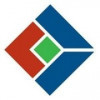
Design Engineer Interview Questions & Answers
Imeg Engineering Indiaposted on 27 Dec 2024
I applied via Campus Placement and was interviewed in Nov 2024. There were 3 interview rounds.
Appetite, Reasoning and English
(2 Questions)
- Q1. About transformers
- Q2. About Machines
(1 Question)
- Q1. About Background
Interview Preparation Tips

I applied via Referral and was interviewed in Apr 2023. There were 2 interview rounds.

(2 Questions)
- Q1. General question about previous work experience, design knowledge, cad knowledge
- Q2. What is gd & T, explain the symbols
- Ans.
GD&T stands for Geometric Dimensioning and Tolerancing, a system used to define and communicate engineering tolerances.
GD&T is a language used to communicate design intent and ensure parts are manufactured to the correct specifications.
It uses symbols to represent different types of tolerances, such as flatness, perpendicularity, and concentricity.
Some common symbols include the diameter symbol (⌀), the perpendicularit...
Skills evaluated in this interview
DGS Technical Services Interview FAQs
Some of the top questions asked at the DGS Technical Services Engineer Trainee interview -
Tell us how to improve this page.
DGS Technical Services Interviews By Designations
Interview Questions for Popular Designations
- Graduate Engineer Trainee (Get) Interview Questions
- Diploma Trainee Engineer Interview Questions
- Apprentice Trainee Interview Questions
- Apprenticeship Trainee Interview Questions
- Trainee Interview Questions
- Graduate Apprenticeship Trainee Interview Questions
- Management Trainee Interview Questions
- Graduate Apprentice Trainee Interview Questions
- Show more
Overall Interview Experience Rating
based on 1 interview experience
Difficulty level
Duration
Interview Questions from Similar Companies
|
Design Engineer
79
salaries
| ₹2.4 L/yr - ₹6 L/yr |
|
Junior Design Engineer
36
salaries
| ₹2.4 L/yr - ₹4.4 L/yr |
|
Senior Design Engineer
36
salaries
| ₹3.6 L/yr - ₹12.2 L/yr |
|
Tekla Modeller
33
salaries
| ₹3.3 L/yr - ₹7 L/yr |
|
Engineer Checker
26
salaries
| ₹2.8 L/yr - ₹6.9 L/yr |

Zealous Services
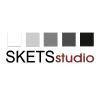
Skets Studio

Pan Gulf Technologies
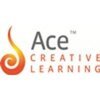
Ace Creative Learning
- Home >
- Interviews >
- DGS Technical Services Interview Questions >
- DGS Technical Services Engineer Trainee Interview Questions






